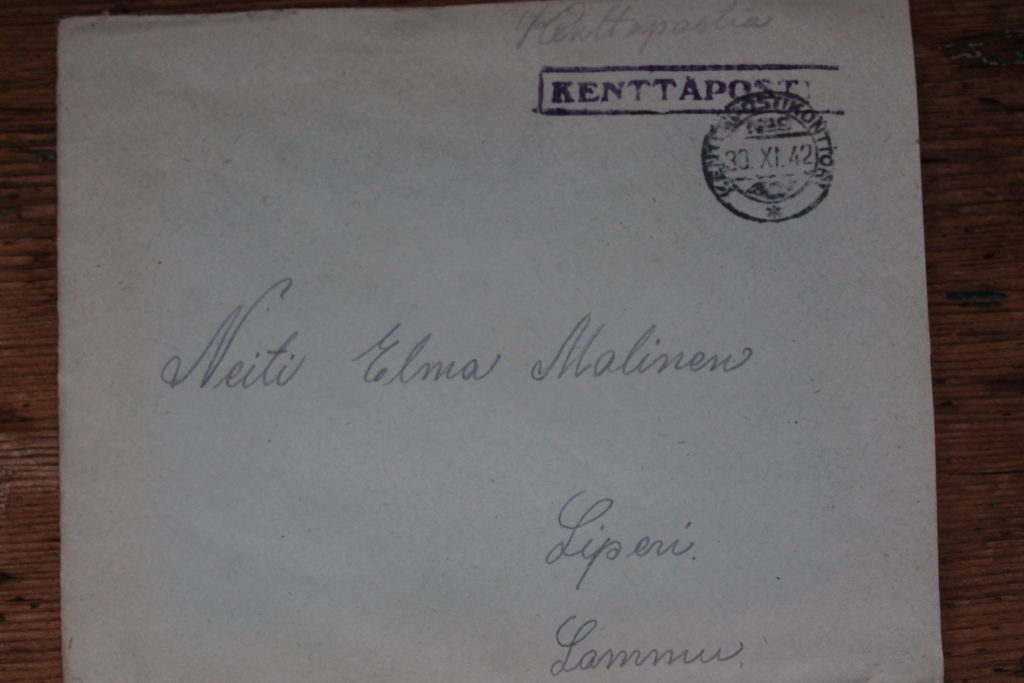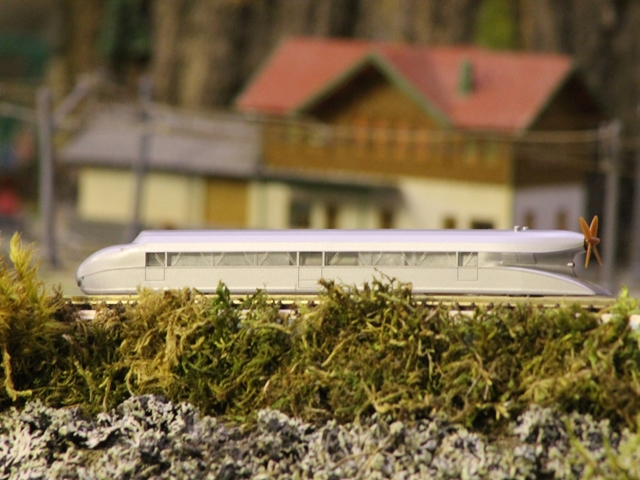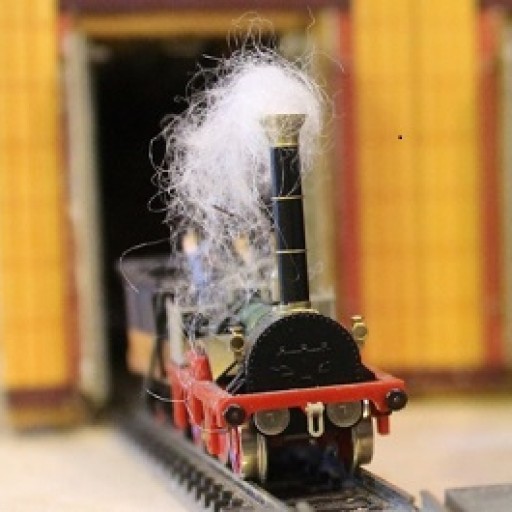One example for the big field post collection, Elma got long ago . Sorry, only in Finnish for the moment…
27.11.1942 Karelia
Dearest Elma!!! …

One example for the big field post collection, Elma got long ago . Sorry, only in Finnish for the moment…
27.11.1942 Karelia
Dearest Elma!!! …


The “Schienenzeppelin” is a prototype of a high-speed railcar for the Deutsche Reichsbahn designed by Franz Kruckenberg in the 1930s, which was intended to reach a speed of 160 km/h on the existing rail network and 200 km/h on suitable and future planned high-speed lines.
The vehicle is designed in lightweight construction with a streamlined carriage body in a tubular construction. The tubular frame of the car body is covered with silver-coloured fireproof impregnated canvas. The seats are also tubular constructions with textile covering.
The running gear consists of two axles, of which the front one is equipped with a small battery-powered electric drive for reverse driving only. The rear axle is without drive. Forward propulsion is provided by a wooden propeller at the rear of the vehicle, powered by a 600 hp BMW aircraft engine. Since no reversible propellers were available at the time, braking power had to be provided by the running axles alone.
From 9 May 1931, test runs were carried out on the public rail network. The last speed reached was 230 km/h.
In the end, after several modifications to the chassis, drive technology and brakes, the development of the vehicle was not pursued further by the Deutsche Reichsbahn, also due to safety concerns regarding the carriage stability in relation to conventional railway vehicle designs. Instead, the Deutsche Reichsbahn commissioned the SVT 877 (high-speed railcar with combustion engine) “Flying Hamburger” with a maximum speed of 160 km/h.
The “SAXONIA” was built in 1838 as the first locomotive built in Germany by the Maschinenbauanstalt Übigau near Dresden for the Leipzig-Dresdener-Eisenbahn Compagnie (LDE). It ran 8666 km and was scrapped in 1843.
In 1840, a second locomotive with the same axle arrangement was built and given the name “PHÖNIX”.
In 1988 a reconstruction of the SAXONIA was put into service, with a maximum speed of 50 km/h.
Source: wikipedia

On 7 December 1835, the history of the railway in Germany began with the inaugural journey of the “Königl. privilegierte Ludwigs-Eisenbahn-Gesellschaft” between the Bavarian industrial cities of Nuremberg and Führt. The locomotive “The Eagle” came from England from the factory of R. Stephenson. The carriages, similar to the stagecoaches, were built by local wheelwrights.
The almost straight track of the Ludwigsbahn was 6 km long. It was not connected to railway lines built later.
Contemporary witnesses report that during the inaugural journey, passengers and spectators were so impressed by the excessive speed of up to 30 km/h that some of them felt dizzy or sick from the sight or the wind of the journey. The cattle in the adjacent pastures reportedly panicked.
The original train is no longer preserved. For the 100th anniversary of the railway in 1935, a prototypical operational replica was built, which survived the Second World War but was almost completely destroyed in a devastating fire at the Nuremberg Railway Museum in 2005. In 2007, the train was restored and delights railway enthusiasts large and small with special trips.
Source: wikipedia
The DRG Class SVT 877 Hamburg Flyer – sometimes also Flying Hamburger or in German Fliegender Hamburger – was Germany‘s first fast diesel train, and is credited with establishing the fastest regular railway connection in the world in its time. Correctly named the Baureihe SVT 877 (later DB Baureihe VT 04 000 a/b), the diesel-electric powered train was used to carry passengers on the Berlin–Hamburg line (roughly 286 km or 178 mi). It entered service in 1933 (From Wikipedia). Vmax=160 km/h

The Serie ET 91 was a series of electric multiple units built for the Deutsche Reichsbahn-Gesellschaft of Germany. The units colloquially known as Gläserner Zug (Glass Train) were equipped with large panorama windows, providing an excellent outside view to the passengers. The vehicles were used for recreational trips only, especially in southern Germany and Austria. (From Wikipedia)

We started to update our homepage on 23. of January 2021.